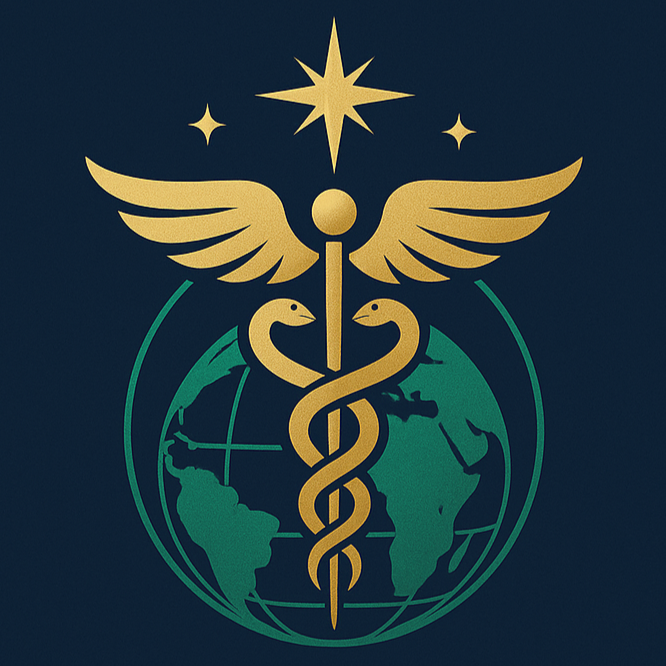CIMAvax-EGF: A New Therapeutic Vaccine for Advanced Non-Small Cell Lung Cancer Patients
Lung cancer is one of the deadliest diseases worldwide, with the highest incidence and mortality rates. Tumor cells often overexpress the epidermal growth factor receptor (EGFR), driving uncontrolled proliferation, angiogenesis, anti-apoptotic signaling, metastasis, and invasiveness.
CimaVax is a novel therapeutic vaccine developed in Cuba to treat non-small cell lung cancer (NSCLC). It targets epidermal growth factor (EGF), a key protein that fuels cancer cell growth. With its unique mechanism, low cost, and encouraging clinical results, CimaVax has attracted global attention. Below is a concise overview of its mechanism, clinical data, and future prospects.
Mechanism of Action
-
Antibody Induction
Recombinant human EGF is chemically linked to the P64 protein from Neisseria meningitidis and formulated with Montanide ISA 51 adjuvant. When injected, the immune system recognizes this conjugate as foreign and produces antibodies against EGF. -
Signal Blockade
These anti-EGF antibodies bind circulating EGF, preventing it from engaging EGFR on cancer cells. By depleting EGF and disrupting its signaling, tumor growth and survival pathways are inhibited.
Clinical Efficacy
Phase I/II Trials
-
Conducted in advanced NSCLC patients who had exhausted standard treatments.
-
CimaVax was well-tolerated, elicited strong anti-EGF antibody responses, and vaccinated patients showed longer survival than unvaccinated controls.
Phase III Trial
-
Enrolled 405 stage IIIB/IV NSCLC patients who had completed 4–6 cycles of chemotherapy.
-
Patients were randomized to receive CimaVax maintenance therapy or best supportive care.
-
Those receiving at least four vaccine doses experienced significantly longer median overall survival (OS) and progression-free survival (PFS).
-
High baseline EGF levels predicted greater benefit, suggesting a potential biomarker.
-
Post-chemotherapy immune markers—CD8⁺CD28⁻ cells, CD4 cell count, and CD4/CD8 ratio—also correlated with clinical benefit.
Phase IV Trial
-
Expanded administration into primary care clinics to improve access and adherence.
-
Safety was confirmed, with no serious adverse events reported.
Global Rollout
CimaVax-EGF is the world's first lung cancer vaccine. Clinical trials are underway in the United States, Cuba, Japan, and several European countries. Unlike conventional therapies, CimaVax does not directly kill tumor cells; it "starves" them by cutting off growth signals. This targeted approach offers lower toxicity and greater specificity.
Key Advantages
-
Extended Survival & Improved Quality of Life
Vaccinated patients live longer and experience fewer side effects than with standard care. -
Cost-Effectiveness
Low production costs and minimal infrastructure requirements make it ideal for resource-limited settings. -
Minimal Side Effects
Common reactions—mild injection-site redness, fever, and flu-like symptoms—are generally well tolerated. -
Combination Potential
Its distinct mechanism pairs well with immune checkpoint inhibitors, targeted agents, and other immunotherapies, with promising synergy and potential to overcome resistance.
Future Directions
-
Expanding Access
Ongoing trials in multiple countries aim to confirm efficacy and safety across diverse populations, paving the way for global regulatory approval and integration into standard care. -
Continued Research
Researchers are optimizing vaccine formulation and delivery, exploring its use in other EGF-dependent cancers (e.g., head and neck, colorectal), and identifying biomarkers to personalize therapy.
Conclusion
By targeting a fundamental driver of tumor growth and harnessing the immune system, CimaVax represents a groundbreaking advance in NSCLC treatment. As clinical data accumulate and international collaborations grow, CimaVax holds the promise of becoming a new standard of care for lung cancer patients worldwide, ushering in a new era of preventive cancer immunotherapy.
肺癌是全球發病率和死亡率最高的致命疾病之一。腫瘤細胞過度表達表皮生長因子受體(EGFR),會促進細胞不受控增生、血管新生、抗凋亡、轉移和侵襲。 CimaVax 是古巴開發的一種新型治療性疫苗,用於治療非小細胞肺癌(NSCLC)。該疫苗針對表皮生長因子(EGF)——一種促進癌細胞增殖的關鍵蛋白。CimaVax 機制獨特、成本低、臨床效果令人期待,已在全球範圍引起關注。以下是其原理、臨床數據和未來前景的簡要介紹。
作用原理
-
誘導抗體:將人體表皮生長因子(EGF)化學結合到腦膜炎 B 菌的 P64 蛋白,再以 Montanide ISA 51 作佐劑。 疫苗將重組人源 EGF 與腦膜炎球菌載體蛋白結合,注射後,人體產生針對 EGF 的抗體。
-
阻斷訊號:這些抗體與 EGF 結合,阻止其與癌細胞表面的受體(EGFR)相互作用,降低血中 EGF 水平,阻斷腫瘤生長訊號。 從而抑制癌細胞的生長和存活訊號。
臨床療效
-
第 I/II 期試驗
-
對多線治療無效的晚期 NSCLC 患者進行測試,結果顯示安全耐受,能激發強烈的抗 EGF 抗體反應,且接種者生存期優於未接種者。
-
-
第三期試驗
-
405 名 IIIB/IV 期非小細胞肺癌(NSCLC)患者,均完成 4–6 週化療後隨機分組。在完成一線化療後的 NSCLC 患者中,隨機分為接種 CimaVax 維持治療組和僅接受支持治療組。結果表明:
-
至少接受 4 劑疫苗的組別,中位總生存期和無進展生存期明顯更長。
-
基線 EGF 水平高者獲益更大,提示可作為預測生物標誌物。
化療後的 CD8⁺CD28⁻、CD4 細胞數及 CD4/CD8 比值,與臨床受益相關。
-
-
第四期試驗(Phase IV)
將疫苗推廣至基層診所接種,提升可及性與依從性。
安全性良好,無重大不良反應。
全球推廣
CIMAvax-EGF 是世界首款肺癌疫苗,已在美國、古巴、日本和多個歐洲國家展開臨床試驗。
與傳統療法不同,它不直接殺死腫瘤細胞,而是「餓死」腫瘤,阻斷增長訊號,更具針對性、毒性較低。
優勢
-
延長生存、改善生活品質
與標準護理相比,CimaVax 接種者活得更久,副作用輕微,日常生活影響小。 -
經濟可行
生產成本低,無需昂貴的設備和大規模基礎設施,非常適合資金有限的地區。 -
副作用少
常見反應僅限輕微注射部位紅腫、發熱和類似流感的症狀,耐受性佳。 -
可與其他療法聯合
其獨特機制適合與免疫檢查點抑制劑、標靶藥物等聯合使用,有望產生協同效果,克服耐藥。
全球影響與未來方向
-
擴大可及性
除古巴外,美國、日本、歐洲等國也在開展臨床試驗,評估不同族群的療效和安全性,推動全球審批和應用。 -
持續研究
科學家正優化疫苗配方和給藥方式,探索在頭頸癌、結直腸癌等其他 EGF 依賴型腫瘤中的潛力;同時研究更多生物標誌物,以實現精準治療。
結論
CimaVax 通過靶向癌細胞增殖的核心驅動因子,激活人體免疫系統,展現出創新免疫治療的巨大潛力。隨著更多臨床數據和國際合作的推進,它有望成為全球肺癌患者的新希望,並推動腫瘤免疫預防治療進入新時代。

Which Lung Cancer Patients Are Suitable for the Vaccine?
Researchers at Cuba's Center for Molecular Immunology say that CimaVax can specifically "switch off" the EGFR receptor on cancer cells, with the goal of turning lung cancer into a chronic, more manageable disease. Depending on the patient, outcomes include:
-
Tumor disappearance
-
Tumor shrinkage
-
Disease stabilization (no further growth, even if no shrinkage)
In some cases it may not stop cancer progression entirely, but it can still relieve symptoms such as pain, nausea, and vomiting.
Which Lung Cancer Patients Are Suitable for the Vaccine?
CimaVax is not effective for everyone. The ideal candidates are:
-
Patients with non–small cell lung cancer who maintain good performance status
After vaccination, these patients can continue working and living normally, with a high quality of life. -
Patients without brain metastases
Because the vaccine's active components have poor blood–brain barrier penetration, any brain lesions must be treated first (e.g., with localized radiotherapy or systemic therapy). Once the brain disease is controlled, suitability for CimaVax can be reassessed. -
Patients with stable disease after first-line chemotherapy
Those whose tumors have achieved stable disease (SD), partial response (PR), or complete response (CR) by RECIST criteria are candidates.-
Patients with progressive disease (PD) who did not respond to standard chemotherapy are not suitable for this vaccine.
-
古巴分子免疫中心的研究人員表示,CimaVax 可以專門「關閉」癌細胞表面的 EGFR 受體,目標是將肺癌轉化為慢性、較易控制的疾病。根據不同病人的反應,療效包括:
-
腫瘤消失
-
腫瘤縮小
-
疾病穩定(腫瘤不再生長,即使未進一步縮小)
在某些情況下,疫苗未必能完全阻止癌症進展,但可緩解疼痛、噁心和嘔吐等症狀。
哪些肺癌患者適合接種?
CimaVax 並非對所有人都有效,理想人選為:
-
非小細胞肺癌且身體狀況良好者
接種後能繼續正常工作和生活,且生活品質維持在高水準。 -
無腦轉移病灶者
由於疫苗成分難以穿透血腦屏障,如有腦轉移須先以局部放療或藥物治療控制病灶,待穩定後再評估是否適合接種。 -
一線化療後病情穩定者
根據 RECIST 標準,腫瘤達到疾病穩定(SD)、部分緩解(PR)或完全緩解(CR)者適用。-
如患者處於疾病進展期(PD),且對常規化療無效,則不適合接種此疫苗。
-


